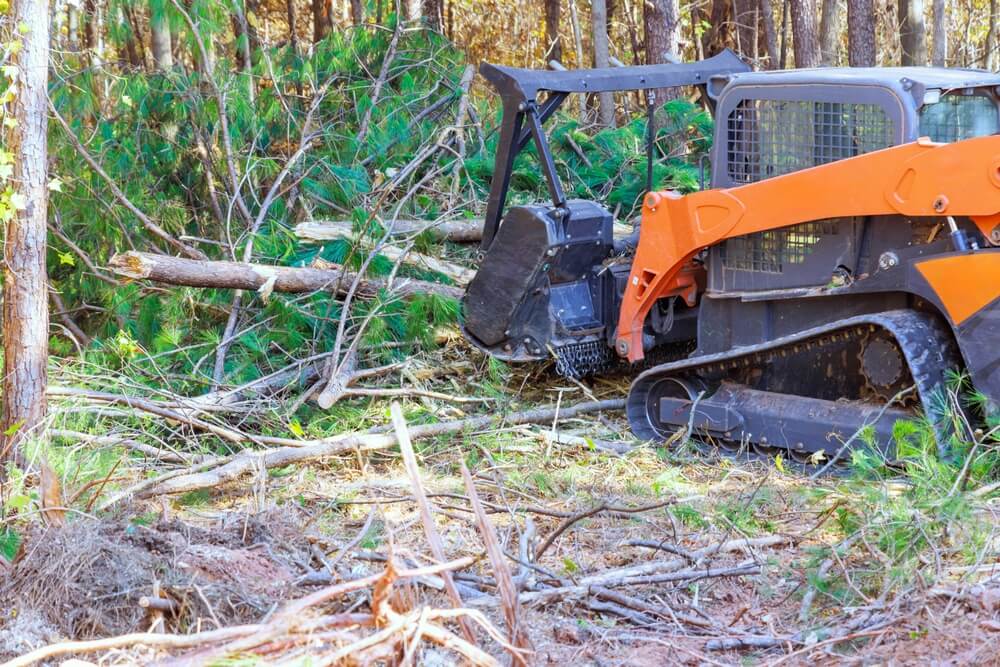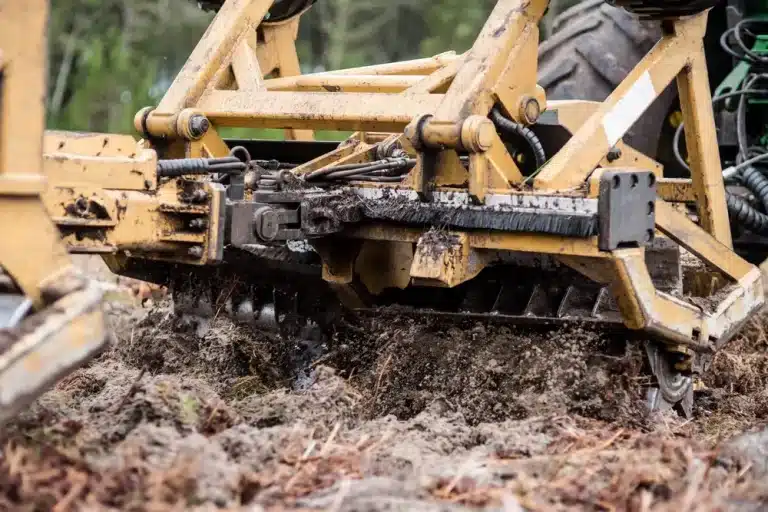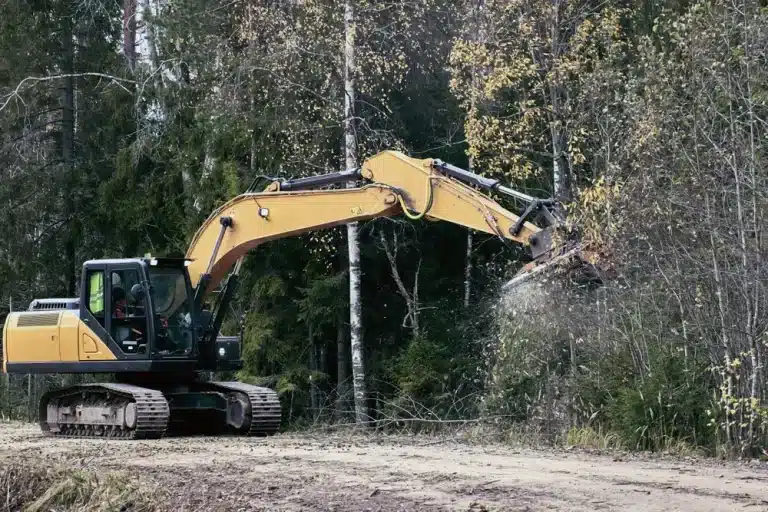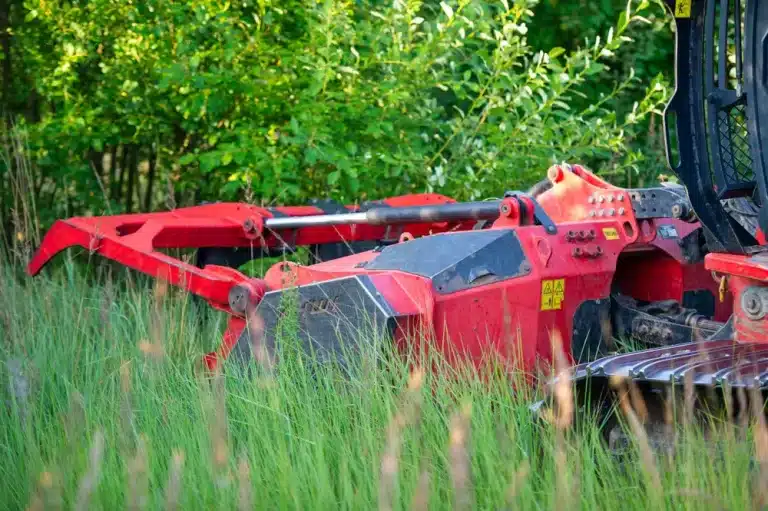Professionals working in land clearing, forestry, or post-disaster recovery often face a choice between a mulcher and a chipper, depending on what needs to be processed and how the job site is configured.
A forestry mulcher is used to grind vegetation directly on the ground, while an industrial chipper handles solid wood like trunks and branches.
These tools are designed for excavators, skid steers and spider machines, and selecting the wrong one can affect both efficiency and safety.
Understanding the difference between a mulcher and a chipper helps avoid downtime and ensures that your machine delivers the right output for the job.
The role and benefits of a forestry mulcher
A forestry mulcher is built to grind vegetation on site, turning brush, saplings and stumps into a layer of mulch that stays where it falls. It does not need to be picked up or moved. Everything is processed in place. That makes the work faster, cleaner and more energy-efficient. The resulting mulch helps prevent erosion, hold moisture in the soil and reduce fire risk. It is an ideal solution for anyone managing wild terrain or maintaining access to natural areas.
Types of vegetation processed by mulchers
Forestry mulchers are made for thick, fibrous plant matter. That includes small trees, vines, shrubs, dense brush and even surface roots. They grind material down using a rotor equipped with heavy-duty teeth or blades. These components are designed to resist impacts, keep their sharpness and handle constant friction. Whether the growth is green, dry or partially decomposed, a mulcher can break it down directly into the soil.
Typical work environments for mulchers
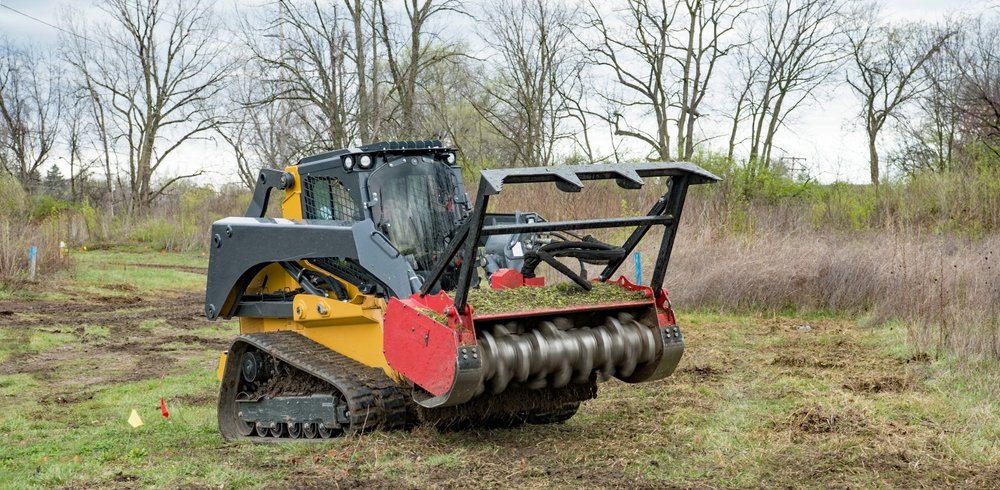
Mulchers are commonly deployed in wildland maintenance, firebreak creation, land development and environmental restoration. Their ability to grind directly on the ground, without needing to collect material, makes them suitable in locations where access is limited and logistics are complex.
The most frequent environments include:
- Wildfire-prone zones needing fuel reduction
- Uneven terrain or slopes requiring stabilization
- Overgrown trails or paths needing reopening
- Conservation areas needing controlled thinning
- Private or public land undergoing reclamation
To explore practical examples, check our use cases page where different terrains and objectives are covered.
Technical structure and performance design
Most mulchers operate with a rotor system powered by the carrier’s hydraulics. That rotor can be fixed or swinging, depending on the intended use. The teeth are replaceable and vary in shape depending on the terrain. The frame is reinforced to handle shocks, rough contact with soil and occasional rock impacts. These machines require a balanced hydraulic flow and a solid carrier to function at full capacity. For specs and models, visit our machines page.
Professional applications of mulchers
Operators in forestry, land development, public works and emergency services are typical users. Whether the goal is to manage vegetation near power lines, create a fire buffer zone or open a trail after winter, mulchers offer a reliable method that reduces manual labor. They are especially useful for long-term contracts where repeated clearing is needed over the seasons.
The function and advantages of a chipper
A chipper transforms solid wood into chips by feeding limbs, logs or trunks into a rotating disc or drum. The blades slice the wood into uniform pieces that fall into a collection chute or are blown into a trailer. This process is different from mulching, which grinds vegetation in place. Chipping creates a clean, dry product that can be stored, sold or reused for energy or landscaping.
Suitable materials for chipping
Chippers are designed for solid wood. That includes felled trees, heavy branches and dry limbs. They are not meant for roots, soil-covered material or fibrous brush. Feeding wet or mixed material into a chipper can jam the mechanism or damage the blades. For that reason, chipping usually takes place after cutting or logging operations have been completed.
Practical situations where a chipper is more efficient than a mulcher

If the job involves logs that have already been cut, chippers are the best tool. They process material faster when it is dry, uniform and has minimal contamination. Some field conditions favor chipping over mulching, especially when debris needs to be removed from site.
Chippers are often used in these specific field conditions:
- Post-storm cleanup where tree limbs are scattered
- Logging sites where trunks need to be reduced in volume
- Urban or suburban forestry work with strict debris rules
- Projects that require clean wood chips for biomass resale
- Clearing operations near roadways or utility lines
Learn more about these tasks in our disaster response tools guide.
Mechanical structure and chip production process
Most chippers work with either a drum or a disc system. Drums are more aggressive and better for large material. Discs are faster and often used in light forestry. The blade sharpness, rotation speed and feed rate all affect output. The system needs a strong hydraulic input and is often paired with grapples or auto-feed mechanisms for efficiency. The chips fall out in a uniform stream, ready for collection.
Reuse and value of chipped output
Chipped material can be used in biomass plants, landscaping, composting or erosion control. The ability to transport and reuse wood chips makes chippers a good choice for projects where material must leave the site. That makes them suitable for urban forestry, roadside work or areas with disposal regulations.
Quick comparison between a mulcher and a chipper
| Feature | Forestry mulcher | Industrial chipper |
| Processing method | Grind material in place | Feeds solid wood into blades for slicing |
| Best suited for | Brush, saplings, vines, surface roots | Logs, large branches, felled trees |
| Material handling | No collection needed | Requires chip collection or transport |
| Ideal environments | Remote, uneven, soft or fire-prone terrain | Flat, accessible zones or roadside operations |
| Output | Mulch left on site | Clean wood chips for reuse or resale |
| Hydraulic demand | High-flow continuous pressure | Moderate-flow with steady input |
| Common use cases | Wildland maintenance, erosion control, trail clearing | Logging cleanup, biomass prep, urban forestry |
| Carrier requirement | Powerful carrier with cooling and balanced weight as large excavators or spider machines | Compatible with various carrier types, including skid steers and mid-sized excavators |
Compatibility between tools, carriers and terrain
Choosing between a mulcher and a chipper depends on both your carrier’s specs and your terrain needs. The two tools have different hydraulic requirements and performance logic. A mismatch can lead to underperformance or mechanical issues. This is why we match every tool to the machine it runs on.
Technical conditions to match tool and machine
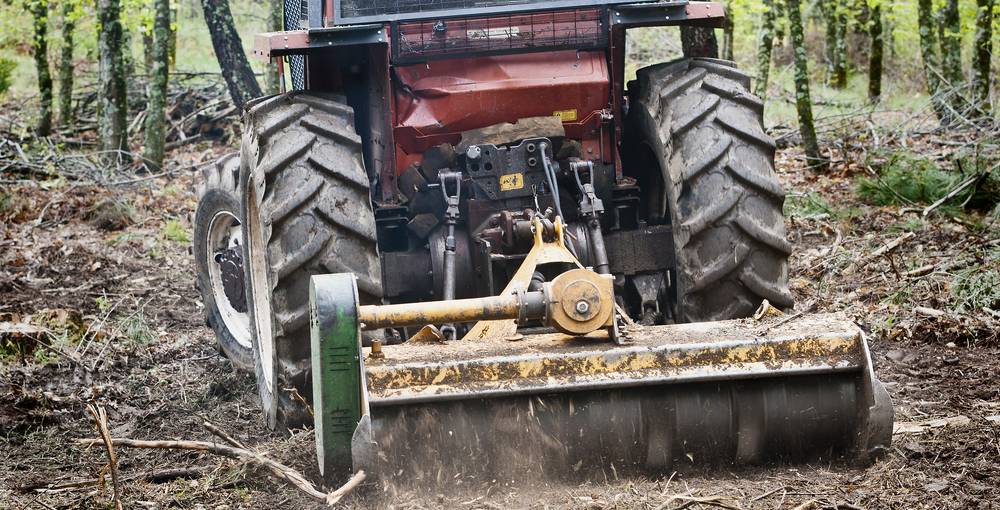
A mulcher requires high-flow hydraulics and a machine that can handle steady pressure during rotation. That means the carrier needs strong cooling systems, good balance and enough power to maintain flow. A chipper also needs flow but puts less dynamic stress on the carrier since the material is fed into it rather than being shredded across terrain. To find a compatible setup, read how to choose the right mulcher article.
Terrain characteristics that influence the decision
The physical layout and condition of your job site strongly affect tool selection. Certain tools are simply more adapted to rugged terrain or to staged material.
Consider the following site traits when making your choice:
- Uneven or soft terrain favors in-place processing with a mulcher
- Flat, accessible terrain can support chipper setups and material movement
- Remote locations benefit from low-logistics tools like mulchers
- Zones with transport or resale constraints favor chipper use
- Rocky or root-filled surfaces may require specific rotor teeth or chipper blades
Your job location may define which system is safer and more efficient. For more advice, see our how to choose the right mulcher guide.
Logistical planning for debris management
Mulching reduces the need to move debris. Chipping requires handling the output, either with trailers or blowers. If you work in remote zones without road access, a mulcher may reduce the number of machine movements needed. If you work near a biomass plant or need to sell chips, then chipping makes better logistical sense.
Combined use in seasonal or mixed operations
Some jobs require initial mulching followed by chipping of leftover trunks. In that case, switching tools is possible as long as your carrier is compatible. Some clients use both tools over the course of the year. If you are unsure about your setup, we will help. Send us your specs via the request a quote page or contact us directly.
Support and guidance for tool selection
Forestry work is not one-size-fits-all. Terrain, climate, machine specs and project goals all influence the choice between mulcher and chipper. If you are facing dense undergrowth, fire-prone zones or sloped land, we may recommend one tool. If you are handling fallen trees or preparing material for resale, the other might be a better fit.
Evaluation based on machine and terrain
We evaluate each request based on real data. Your machine type, flow rating, job site photos or maps all help us suggest the right tool. Our goal is to avoid trial and error by giving you a match that performs on day one.
Contact and response process
Use the contact us form or request a quote.
To make your request easier, prepare the following:
- Machine make and model
- Hydraulic flow and pressure values
- Type of vegetation or wood to process
- Terrain layout and site access conditions
We respond fast and match your setup with precision.
